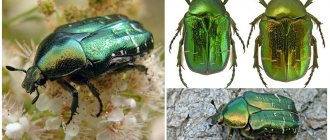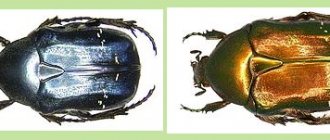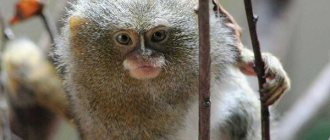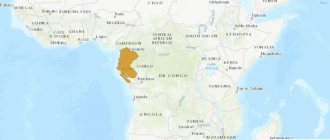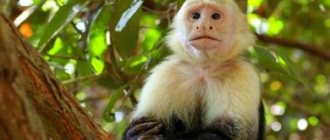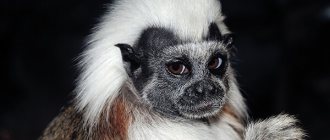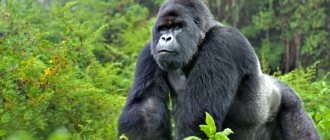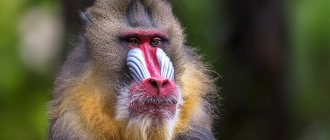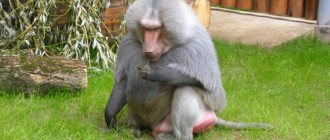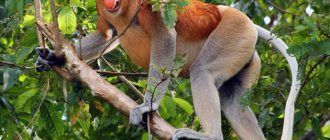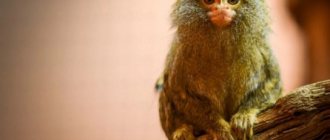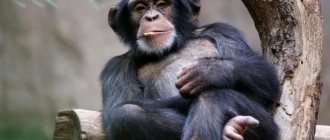7357
7358
7359
7360
7361
7362
7363
7364
7365
7366
7367
7368
7369
7370
7371
7372
7373
7374
Rhinopithecus roxellana is listed as endangered on the IUCN Red List of Threatened Species.
Description
The first European to see these fantastic monkeys was the French priest Armand David. He arrived in China in the 1860s as a missionary, but was much more successful in zoology than in converting the inhabitants of the Middle Kingdom to Catholicism. His name is immortalized in the name of the deer that he found in the imperial park. David made two more discoveries in the virgin mountain forests of Sichuan province, where he discovered a giant panda and golden blue-faced monkeys. The famous zoologist Milne-Edwards, who studied the materials brought by David to Europe, was most struck by their noses, which curved upward so much that in older individuals they almost reached the forehead. He gave the newly discovered creatures the Latin name Rhinopithecus roxellanae. The generic name Rhinopithecus - “rhinopithecus” - means “nosed monkey”, and the specific name is formed on behalf of the legendary beauty Roksolana - a slave, and then the beloved wife of Sultan Suleiman I the Magnificent, who was remembered by the residents of Istanbul for her upturned nose.
This is a fairly large monkey: its body length reaches 57-75 cm, tail length 50-70 cm, males weigh up to 16 kg, females are much larger: they can weigh up to 35 kg.
In China, a man was crossed with a monkey: what does this discovery threaten the world with?
The scandal that burst from the pages of a specialized scientific journal has deprived scientists all over the planet of sleep. He also inspired futurologists and film scriptwriters. Either a monster or a superman was created by a group of geneticists from the USA and China in a laboratory test tube. So far it is only an embryo smaller than the eye of a needle. Originally a primate that was infused with human stem cells. Out of 130 embryos, three survived and are developing rapidly.
"Chimeras
–
a legend as old as civilization itself.
And this experiment could mark the beginning of a completely new era in medical research ,” said Perry Wilson, MD.
Despite ethical disputes, geneticists themselves say that they will eventually receive a unique model for studying new diseases. They will also open the way to the artificial cultivation of organs for transplantology. So, what kind of creature is growing in a test tube? The authors of the experiment call it “a biological entity created by people in which two types of cells carrying different genomes are deliberately mixed.”
“I was shocked because this is so beyond what scientists do, it’s just immoral,”
says Robert Klitzman, director of bioethics programs at Columbia University.
Immoral, unethical, and finally downright dangerous. Numerous critics of such daring gene experiments point to a number of controversial nuances, but most importantly: is this embryo a future person? If so, then such experiments on people are strictly prohibited. The previous genetic sensation, when twins immune to HIV were born, ended not with a Nobel Prize for the Chinese scientist, but with a prison sentence.
“When Lulu and Nana were just a small cell, gene surgery closed the door through which HIV could infect humans. We then checked how the operation went using full genomic sequencing and found that everything was successful."
– says biophysicist He Jiankui.
The creators of the chimera are fending off attacks as best they can, saying that similar experiments have been carried out for many decades, and no one has been bothered by it. Take, for example, the sensational tests in the Soviet Union. The field for experiments then became the famous nursery for primates in Sukhumi, where work in the laboratory was in full swing a hundred years ago. True, then they tried to create not a chimera, but a hybrid, that is, they used less sophisticated methods of crossing species.
“There has always been interest in this topic; we know that even in the USSR in the 20s these experiments were carried out very actively. Experiments on crossing people with primates were actively carried out in the 90s, then they caused a wave of indignation among various aspects of society... And then an international agreement was reached that prohibited this,”
– notes the president of the League for the Defense of Doctors Semyon Galperin.
And yet, in scientific institutes around the world they are desperately arguing with nature, planting human cells in the embryos of either cows or pigs. And now - a monkey. According to geneticists, the embryo will live up to a maximum of 20 days. But what will happen if less conscientious scientists manage to use this same technology and still grow a full-fledged viable fetus?
Spreading
Rhinopithecus roxellana is found in southern and central China. The largest populations of these primates live in the Wolong National Nature Reserve (Sichuan). Their habitats lie at the latitude of the subtropics and tropics, but they live in the mountains at an altitude of one and a half to more than three thousand meters. The lower part of this belt is occupied by thickets of bamboo and evergreens. In winter, there are temperatures below zero and snowfalls are frequent, with snow sometimes remaining for up to 6 months of the year. But primates feel so comfortable in these unsuitable conditions and tolerate the cold so well that they are often called “snow monkeys.” In the warm season, golden monkeys rise higher into the mountains, into coniferous forests, to the very top border of the taiga, and do not go higher only because there are no trees there. In winter, rhinopithecus go down to the foothills and valleys, not so much for warmth as for food: in the snowy taiga there is no food suitable for monkeys at all.
Some features of Monkey Island
- As in any other case, we strongly recommend not to irritate the monkeys, make them angry or provoke them
- You can't leave the footpaths
- try to hide all the jewelry and shiny things (you probably understand why)
- there are no temples or other buildings here - this is the most natural habitat for macaques (with the exception of improvised circus and theater arenas where performances are held)
- Monkey Island is open to visitors from 8-00 to 16-30
- visiting is paid, but children under 1m 20 cm in height are admitted free of charge
Nutrition and lifestyle
In summer, the main food for which is young leaves, shoots, fruits, flowers, seeds and lichens. In winter, Roxellan's rhinopithecus switches to roughage food, which is not typical for other primates: they are able to digest tree bark and pine needles, and lichens become their main food. Their warm, thick coat and behavioral characteristics help them avoid freezing in harsh winters. For example, the fact that females and cubs of different ages from the same family group sleep closely huddled together and thus retain warmth, and at night they are also joined by extraneous adult females. Males usually sleep separately and are constantly on alert, protecting their group from danger. Rhinopithecus spends most of its life in trees and descends to the ground solely to sort things out with relatives or neighbors. At the slightest danger, the monkeys instantly “fly up” to the treetops.
Males
The status of males depends on perseverance, courage and the number of wives, while the female is more respected if she has offspring.
The emergence of conflicts is not always accompanied by the use of brute force, this is how they protect themselves. And instead of physical reprisals, they are content with intimidating, spectacular poses, barking and roaring. Most often, the animals do not come to a fight; the winner is usually the male with the most terrifying appearance. With all this, snub-nosed monkeys cannot be considered cowardly - large individuals can quite successfully defend themselves from hawks, leopards and other predators.
Social behavior and reproduction
Typically, Roxellan's rhinopithecus lives in groups of 5-10 animals, consisting of a breeding pair and their offspring, but sometimes these family groups gather in huge flocks of up to 600 individuals. Males can live alone or unite in male groups; therefore, in family groups, females try to establish social connections not with males, but with other females. Males of rhinopithecus reach sexual maturity at the age of 7 years, females - at 4-5 years. Pregnancy lasts 7 months for these monkeys, and both parents care for the cubs. Females often have helpers, and all members of the group protect the cubs. In case of danger, they are placed in the center of the group, while the males come forward to meet the enemy.
Where can residents of Russia see it in captivity?
In Russia, small monkeys do not live in natural conditions. Residents of Russia can see exotic animals in zoos:
- Small funny animals were purchased for the Moscow Zoo this year. A female pygmy marmoset and a common monkey were delivered from Indonesia.
- For the Leningrad Zoo, pygmy marmosets were transported by plane from the Czech Republic to St. Petersburg.
- Little monkeys appeared at the Rostov Zoo - the female gave birth to three newborns. However, she can only feed two cubs.
The third one is looked after by zoologists, who feed the baby with formula and take care of him. In large cities of Russia, pet stores offer pygmy marmosets for sale. The species is well adapted for living at home.
Existential threats
Unafraid of snow and frost, able to find food anywhere, golden monkeys flourished in an era when the mountains of Southern and Central China were covered with endless forest. However, the hardworking Chinese peasants, century after century, conquered more and more lands from the forest, and even hunted these unique monkeys. In recent decades, the Chinese authorities have come to their senses. Roxellan's rhinopithecus has been placed under protection, and a network of nature reserves and parks has been created in their habitats. Severe measures against poachers have made it possible to suppress illegal fishing and prevent the threat of destruction of these amazing animals. Now about 5,000 rhinopithecus live in local forests; the species is listed in the Red Book of the International Union for Conservation of Nature as endangered.
These monkeys do not form a single population - they live in separate families on islands of forest, separated by a sea that is insurmountable for them. Meanwhile, a normal monkey family needs from 15 to 50 km2 of forest to live. Therefore, only a few families, or even just one, live on each island. Genetic exchange between such isolated groups is practically impossible, and this dooms them to degeneration within several generations. Experts have not yet found ways to solve this problem. The ideas of relocating young animals from one reserve to another or releasing monkeys born in captivity into the wild are being discussed. But to implement such programs, it is necessary to know much more about rhinopithecus than is currently known. Information is needed not only about the composition of their diet and the timing of reproduction, but also about the relationships between members of the group, between the group and strangers.
Physical characteristics[edit]
The adult and juvenile golden snub-nosed monkey is sexually dimorphic.
Adult males (approximately 7 years old) have large bodies covered with very long golden spines on the back and mantle area. The crest is medium brown, while the back, crown to nape, arms and outer thighs are dark brown. The brown comb also contains physically straight hair, the shape of which is useful for individual identification. [4] Additionally, when their mouths are open, researchers can observe long fangs. They are usually between 58 and 68 cm and weigh around 16.4 kg. [10]
Subcharged males (estimated to be 5–7 years old) are the same size as fully developed adult males but have a slimmer body. The golden guard hairs on the cape are short and sparse, and their median brown ridges show microstreaks that also change color. [4]
Adult females (estimated to be older than 5 years) are smaller in size and are about half the size of adult males. The back, crown to nape, mantle, arms and outer thighs are brown to dark brown in some older females. [4] However, golden guard hairs are also present on the back and cape area, but they are shorter in length than those of males. The brown ridge shows microstripes. Their breasts and nipples are large and easily visible, which is also useful for identification. After pregnancy, it is common to see babies and newborns hanging under women's bellies while they climb or walk. [4] They typically range from 47 cm to 52 cm and weigh about 9.4 kg. [10]
Subcharged females (estimated to be 3–4 years old) are smaller than adult females and are about two-thirds the size. Body hair is brown, gradually becoming golden, but without golden guard hairs. Their medium brown comb is also micro-ringed. Their breasts and nipples are also not as large as those of adult females. [4]
Juveniles (aged 1 to 3 years) are quite small, accounting for less than two-thirds of adult females. The body hair is light brown, gradually becoming reddish-gold. On the rest of the body (back, from crown to nape, cape, arms and outer thighs) the hair is brown. The golden hairs on the back or promontory are not recognizable, and the middle brown comb is absent in adult females and males. [4] Gender discrimination is difficult because their external genitalia are underdeveloped.
Infants (ages 3 months to 1 year) are light brown-gray or light brown in color and appear white in sunlight. They are often observed playing with teenagers or other infants, but are noted to spend most of their time near their mothers or suckling milk. [4] They also cling to the front of their mother (mostly on the lower abdomen) for protection, feeding and nurturing. Their sex cannot be distinguished at this point, just like in newborns.
Newborn babies (under 3 months of age) are dark gray to light gray in color. After about 2 months they turn light brown-gray. [4] They also rarely leave their mothers or other females bearing them, a practice called alloparting. Sex at this time is indistinguishable.
